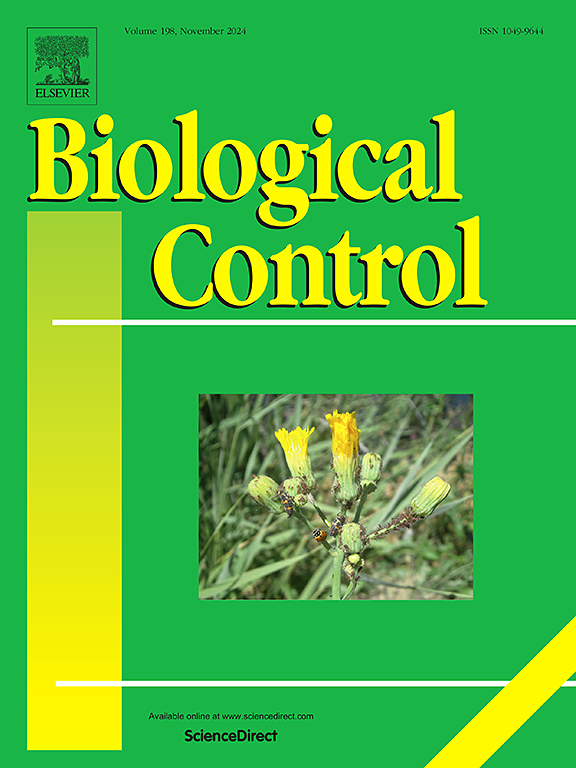Diaporthe atlantica improves tomato resistance against the vascular pathogen Fusarium oxysporum f. sp. lycopersici
IF 3.4
2区 农林科学
Q2 BIOTECHNOLOGY & APPLIED MICROBIOLOGY
引用次数: 0
Abstract
Fungal pathogen attacks are a major threat to crop growth and productivity, with Fusarium oxysporum f. sp. lycopersici being particularly menacing to tomato plants by causing vascular wilt disease. Diaporthe atlantica is a main component of the root microbiome of Festuca rubra subsp. pruinosa, a grass which inhabits sea cliffs. This fungus can confer drought and salinity tolerance to some agricultural plant species. This study evaluated the efficacy of Diaporthe atlantica in conferring resistance against Fusarium in tomato plants in a greenhouse experiment. A significant reduction of Fusarium wilt symptoms was observed in plants inoculated with Diaporthe. Furthermore, Diaporthe suppressed Fusarium colonisation, mitigating vascular browning and improving plant growth, chlorophyll content and nutrient acquisition. In addition, the effect of Diaporthe atlantica on plant defence against Fusarium does not directly involve classical induced systemic resistance (ISR) or systemic acquired resistance (SAR) mechanisms. These findings underscore the potential of Diaporthe as a biocontrol agent against Fusarium wilt.
提高番茄对番茄维管病原菌尖孢镰刀菌的抗性
真菌病原体的攻击是作物生长和生产力的主要威胁,其中番茄枯萎病(Fusarium oxysporum f. sp. lycopersici)通过引起血管性枯萎病对番茄植株构成特别大的威胁。大西洋散孢菌是红羊茅根微生物群的主要组成部分。一种生长在海边悬崖上的草。这种真菌能使某些农业植物具有耐旱和耐盐性。本研究在温室试验中评价了大西洋枯病菌对番茄植株镰刀菌病的抗性。接种Diaporthe后,植株枯萎病症状明显减轻。此外,Diaporthe抑制镰刀菌定植,减轻维管褐变,促进植物生长、叶绿素含量和养分获取。此外,大西洋枯菌对植物对镰刀菌的防御作用并不直接涉及经典的诱导系统抗性(ISR)或系统获得性抗性(SAR)机制。这些发现强调了Diaporthe作为枯萎病生物防治剂的潜力。
本文章由计算机程序翻译,如有差异,请以英文原文为准。
求助全文
约1分钟内获得全文
求助全文
来源期刊

Biological Control
生物-昆虫学
CiteScore
7.40
自引率
7.10%
发文量
220
审稿时长
63 days
期刊介绍:
Biological control is an environmentally sound and effective means of reducing or mitigating pests and pest effects through the use of natural enemies. The aim of Biological Control is to promote this science and technology through publication of original research articles and reviews of research and theory. The journal devotes a section to reports on biotechnologies dealing with the elucidation and use of genes or gene products for the enhancement of biological control agents.
The journal encompasses biological control of viral, microbial, nematode, insect, mite, weed, and vertebrate pests in agriculture, aquatic, forest, natural resource, stored product, and urban environments. Biological control of arthropod pests of human and domestic animals is also included. Ecological, molecular, and biotechnological approaches to the understanding of biological control are welcome.
 求助内容:
求助内容: 应助结果提醒方式:
应助结果提醒方式:


